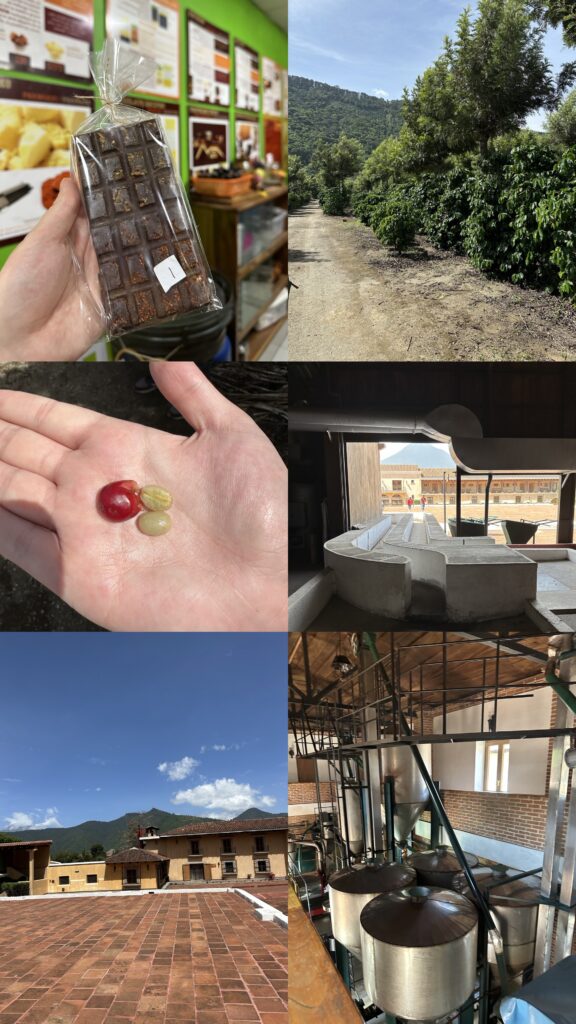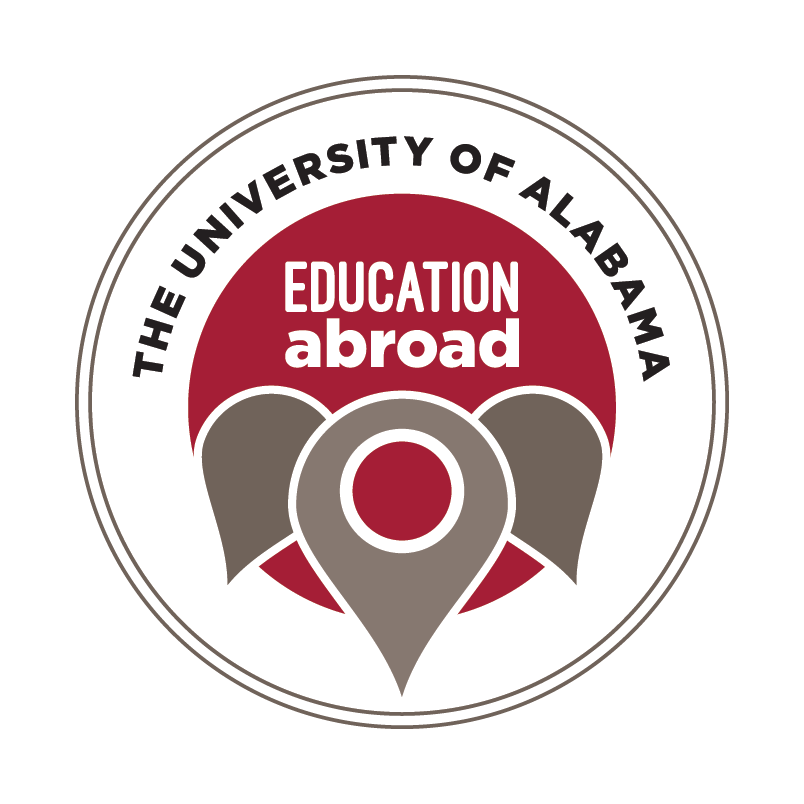
Along with our coursework for PSC 331 and 332, we have also had the opportunity to participate in excursions in Antigua that teach us about the history and economy of the area with a hands-on approach. First, we went to the ChocoMuseo located in Antigua’s central square. There, our instructor taught us the process of creating chocolate from harvest to store ready. We got to taste the cacao beans along the way, experiencing the pulp, fresh beans, and roasted ones. We also tried different traditional Mayan cacao drinks and learned about their significance in Mayan culture. At the end of the demonstration, we got to create our own chocolate bars. I made mine half sweet and half salty. On one side I put mint and roasted coconut, and the other sea salt and Tajin. Guatemala exports around 13.7 billion dollars’ worth of chocolate each year, and our instructor dove deeper about the significance of the product to the region.
Another major export of Guatemala is coffee, which makes up about 13 percent of the country’s GDP. To help us learn more about coffee, we visited the Filadelfia coffee plantation. The Filadelfia plantation has been operating since colonial times and continues to produce coffee while also providing amenities like a resort, gift shop, cafe, restaurant, and truck tours. Once we arrived, we got on the trucks to head to the coffee nursery. There, our guide explained the types of coffee they grow, and showed us the plants at different stages of life. We walked to the mature plants and picked our own ripe beans. We got back into the trucks and headed to the base of the plantation, where there were facilities for sorting, drying, and roasting. Our guide explained the way expert tasters create new blends, and the different grades of coffee beans. The coffee grown, harvested, and processed at Filadelfia gets shipped across the world, and is bought by major coffee shop chains like Starbucks. In addition to the process of making coffee, we also learned about the history of the plantation and more about the different families that have owned it. During colonial times, it was managed with slave labor. Now, it is a fair-trade certified farm and processing plant. After the tour, we headed to the restaurant for lunch, where we each got to try a shot of espresso or an americano. I chose an americano and added a lot of cream and sugar. Coffee and lunch were delicious, and we headed back to Casa Herrera for afternoon class.
